---------------------------------------------------------------------------------------------------------------------
Author's Statement for Transparency and Disclosure
The test sample/s featured in this article have been provided for technical testing and review by the manufacturer. Test samples are retained by the reviewer following publication of the completed review for the purposes of long term testing and product comparisons.
All output figures and test results published in this review are the sole work of the reviewer, and are carried out independently and without bias. Test results are reported as found, with no embellishments or alteration. Though best endeavours are made to maintain the accuracy of test equipment, the accuracy of these results is not guaranteed and is subject to the test equipment functioning correctly.
----------------------------------------------------------------------------------------------------------------------
Author's Statement for Transparency and Disclosure
The test sample/s featured in this article have been provided for technical testing and review by the manufacturer. Test samples are retained by the reviewer following publication of the completed review for the purposes of long term testing and product comparisons.
All output figures and test results published in this review are the sole work of the reviewer, and are carried out independently and without bias. Test results are reported as found, with no embellishments or alteration. Though best endeavours are made to maintain the accuracy of test equipment, the accuracy of these results is not guaranteed and is subject to the test equipment functioning correctly.
----------------------------------------------------------------------------------------------------------------------
There are so many discussions about the various pros and cons of different cell types, and about what light to choose to ensure you can keep it powered for as long as possible. There are other lights that take several different cell types, but the new TA10 from Nextorch might just have one up on them.
Having 5 major cell types to choose from and being a single cell light means you can rob just about any cell, at any state of charge, to use in the TA10 – a universal cell recipient.
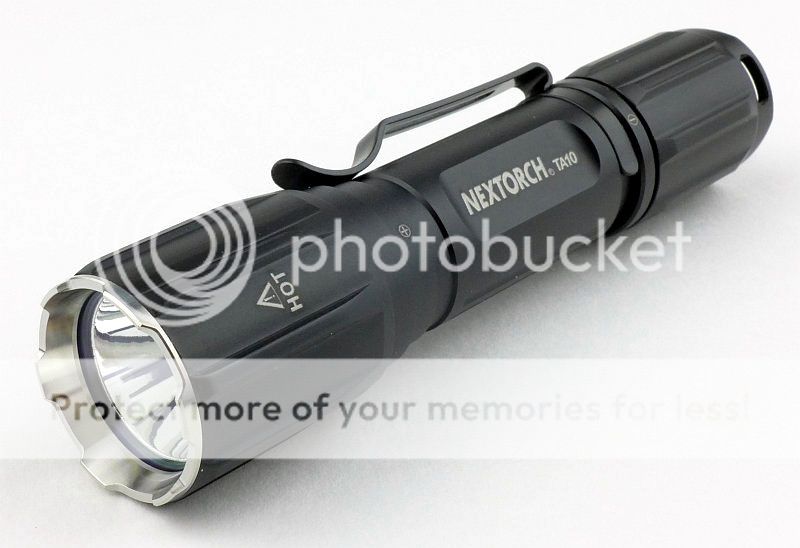
Taking a more detailed look:
The Ta10 packaging is very smart, and even has a metal hanger for shop displays.
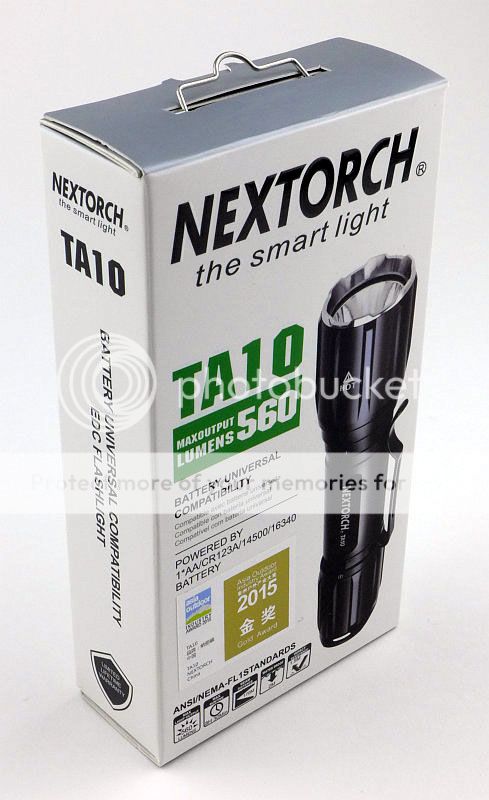
You get two spare O-rings, a wrist lanyard and the instructions along with the TA10.
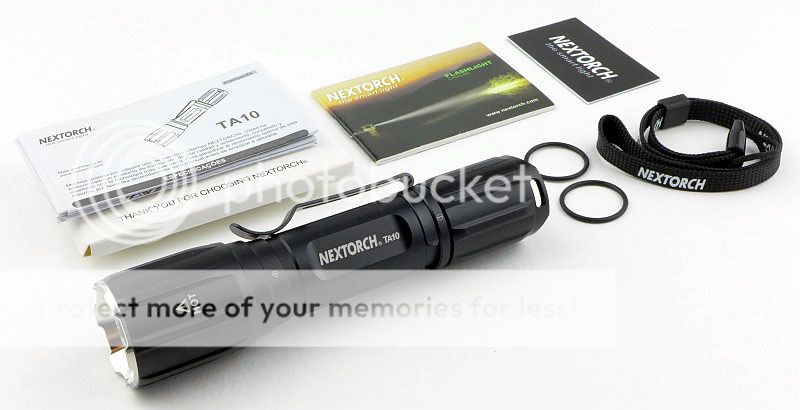
The switch is semi-recessed so the TA10 will tail stand.
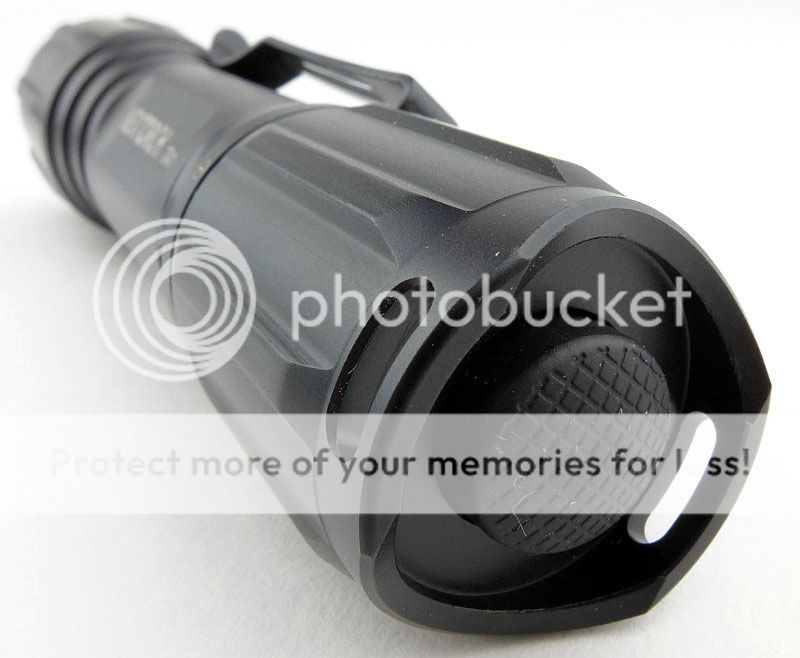
The cell polarity is marked on the outside of the battery tube. A steel pocket clip is fitted to the TA10 when it arrives.
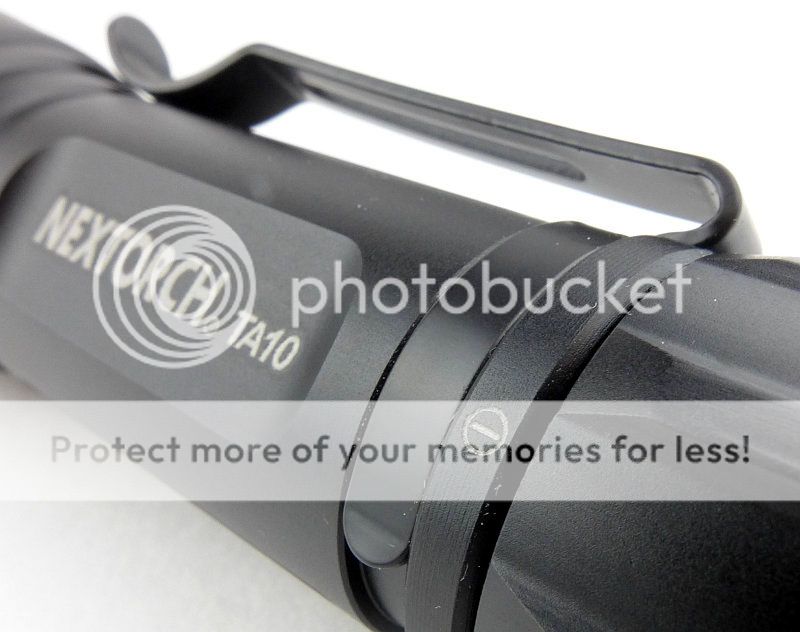
All contact surfaces in the tailcap are gold plated.
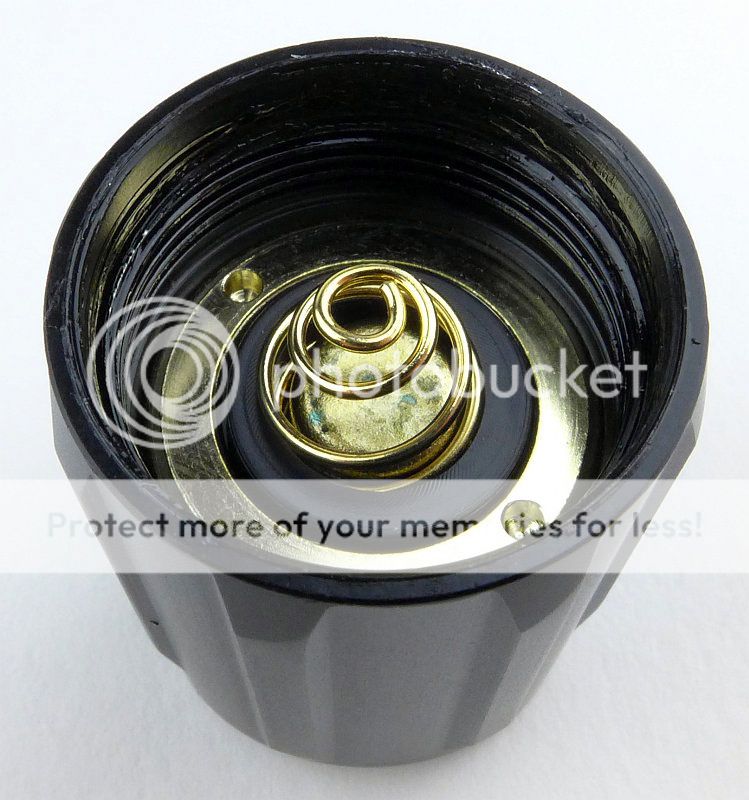
The threads are fully anodised and come well lubricated.

Looking inside the battery tube, you can see a sliding contact plate. This is designed to allow the TA10 to accommodate cells of significantly different length.
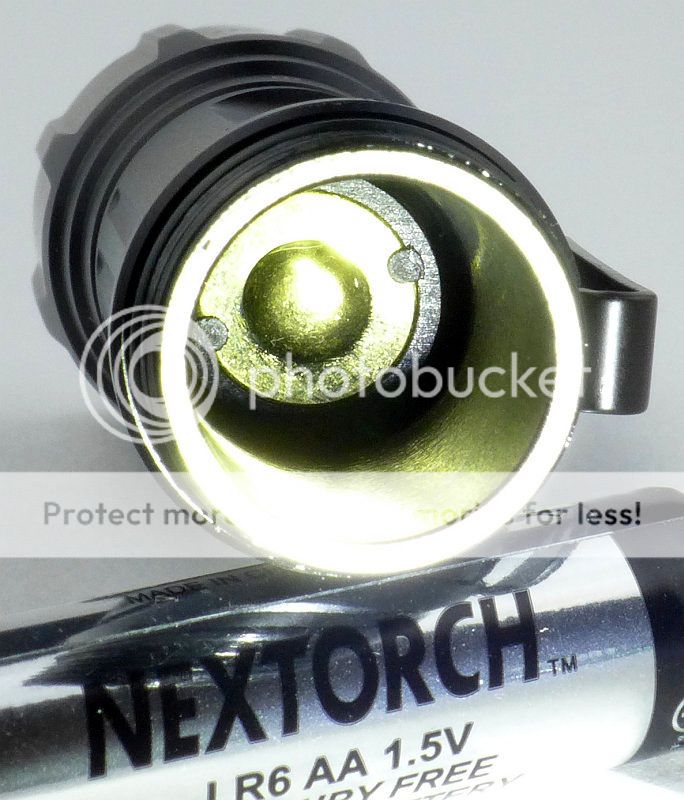
An XP-L LED is used.
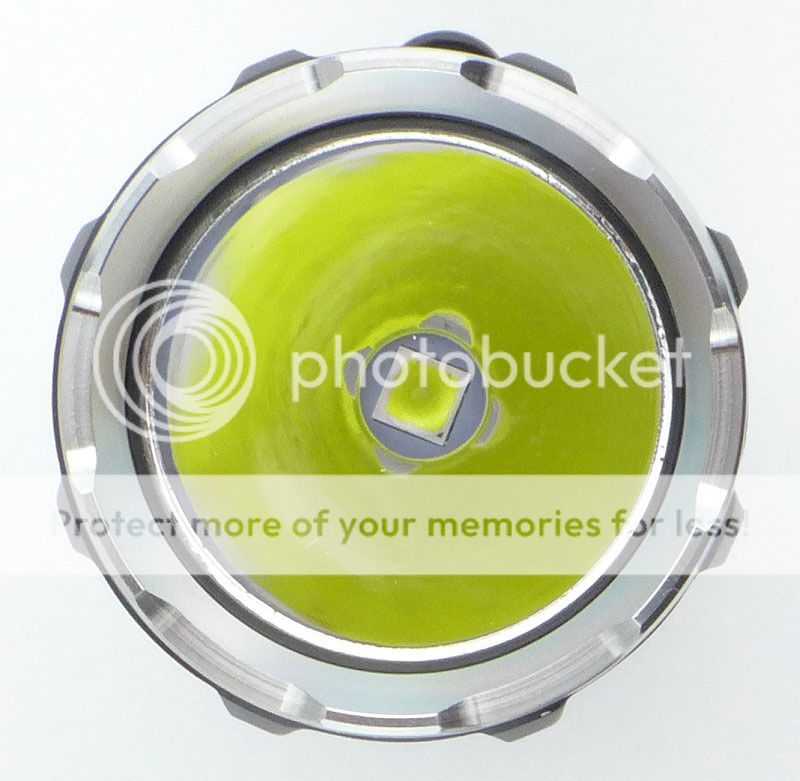
The XP-L sits at the base of a smooth reflector.
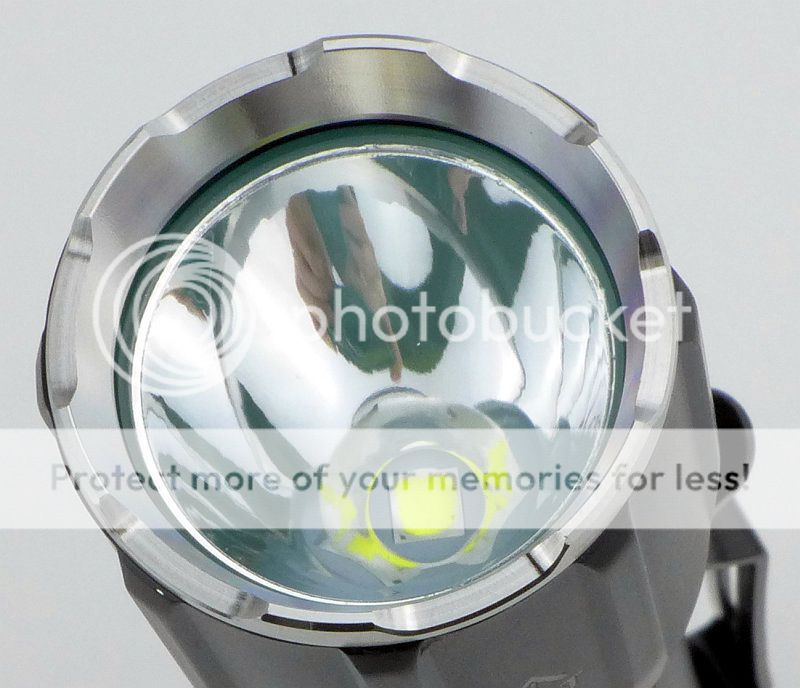
All machining and finish is excellent. The Bezel is a shining example of this will all edges slightly bevelled and precise.
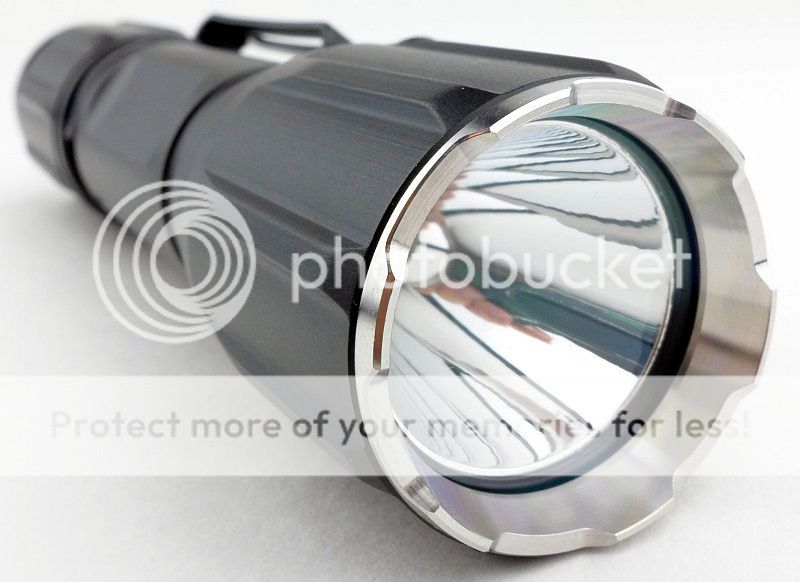
The beam
Please be careful not to judge tint based on images you see on a computer screen. Unless properly calibrated, the screen itself will change the perceived tint.
The indoor beamshot is intended to give an idea of the beam shape/quality rather than tint. All beamshots are taken using daylight white balance. The woodwork (stairs and skirting) are painted Farrow & Ball "Off-White", and the walls are a light sandy colour called 'String' again by Farrow & Ball. I don't actually have a 'white wall' in the house to use for this, and the wife won't have one!
Starting indoors, the TA10 has a strong hotspot and relatively narrow spill beam.
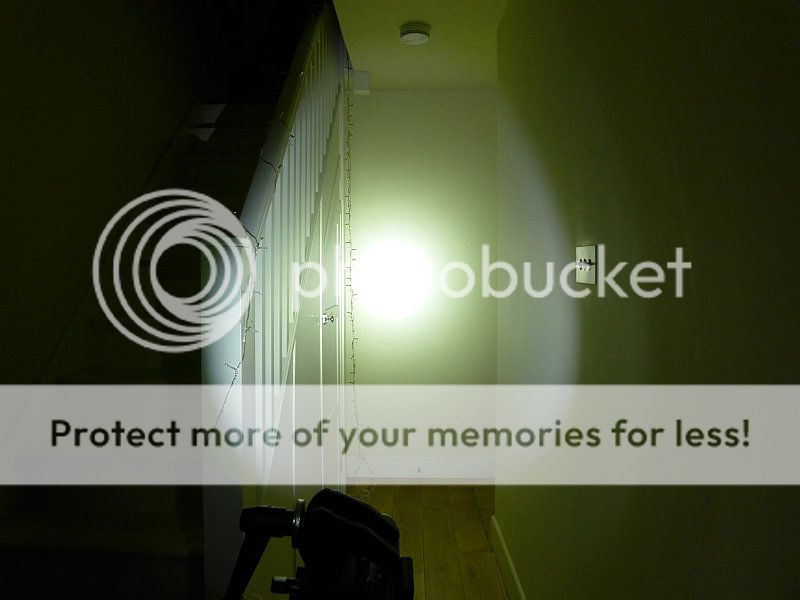
This narrow beam allows the 500lm output to have a reasonable range.
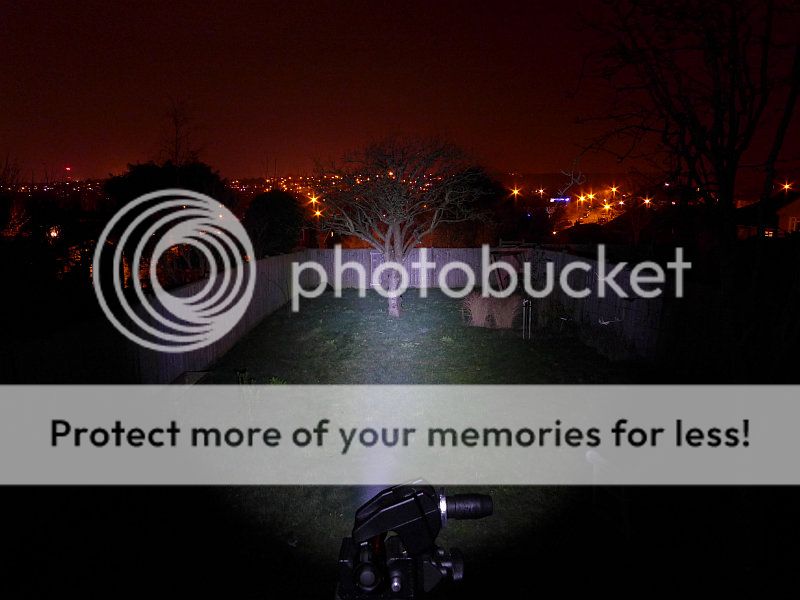
Modes and User Interface:
As first reported in my reviews in relation to the TA40, Nextorch have a DUO-SWITCH which is also used on the TA10. Effectively this is a forward and reverse clicky switch combined.
The DUO SWITCH gives you forward clicky momentary operation, but once clicked on gives you reverse clicky mode change capability. An excellent combination.
From OFF you can access High or Strobe. For High press the switch. For Strobe double tap the switch.
With either High or Strobe selected you can fully depress the switch and latch the output ON.
When ON, you can access Medium, Low and High. Tap the switch to change down to Medium, tap the switch again for Low, and again for High.
In simple terms the TA10 always comes on in High and once latched ON, you can access Medium and Low.
Batteries and output:
Officially the TA10 will take AA, CR123, 14500 and 16340 (RCR123), and unofficially AAA as well. When you consider that AA can be ZnC, Alkaline, Lithium, NiMh or NiCd, and the TA10 will run happily on any of these as well as 3V Lithium cells and li-ion, you see that the TA10 will run on anything you can fit inside its battery tube.
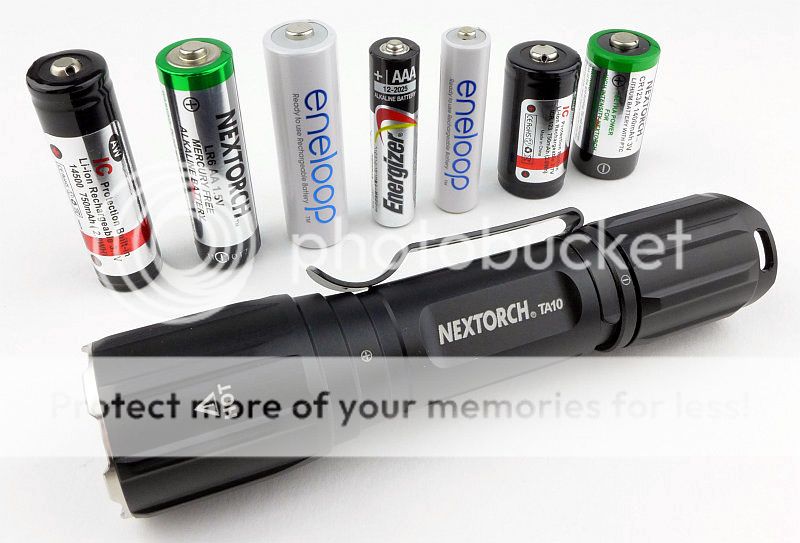
Normally this is a much shorter section, but a few more details need to be shown. Starting with CR123, as you can see, the cell sits in the battery tube nicely.
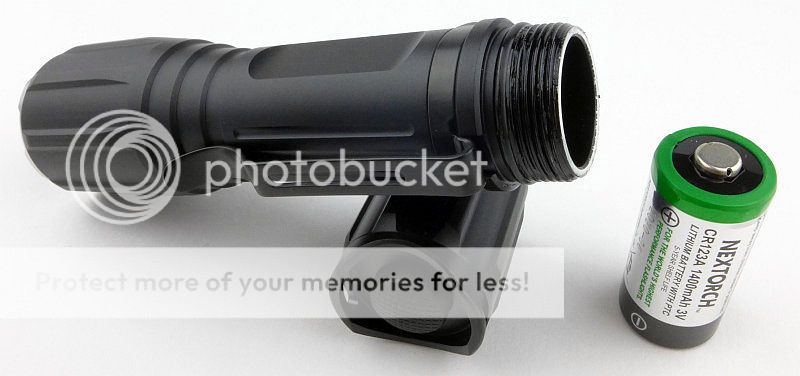
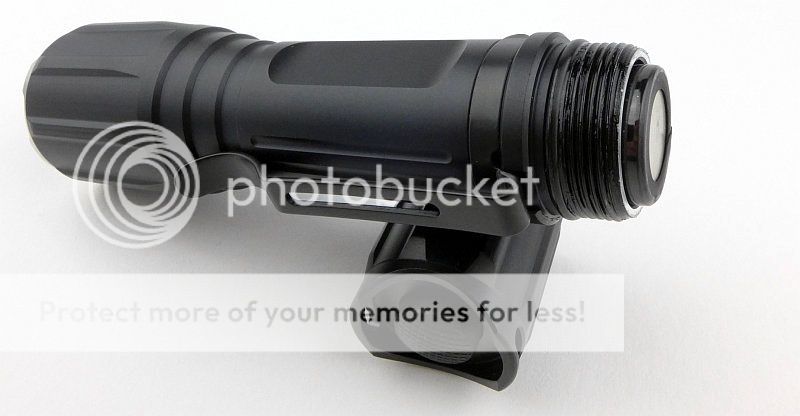
Moving to a longer cell (here an AW 14500 is being used, when inserted it sticks out a long way. This is due to the sprung contact plate which has a long travel and allows the TA10 to take such different cells. As you push the tail-cap on the 14500 is pushed down into the battery tube.
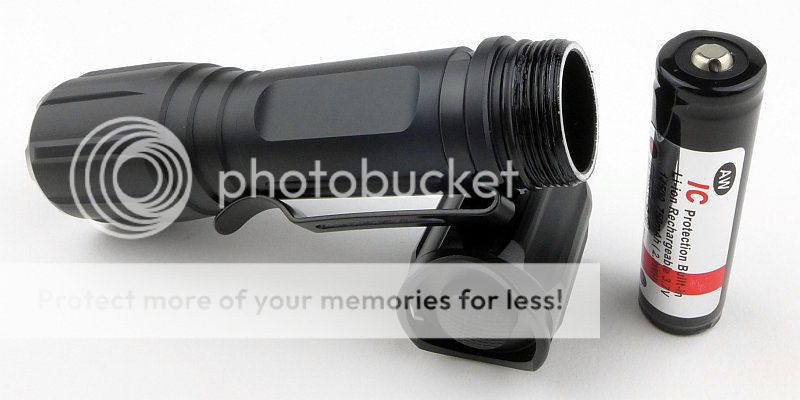
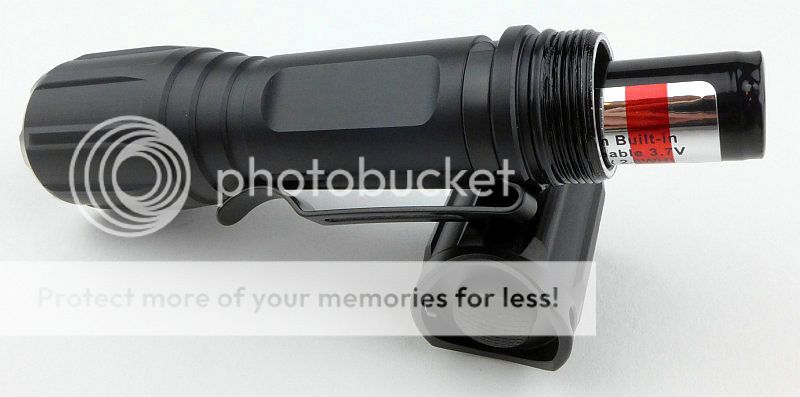
The other extreme of cell size compatibility is that you can actually use AAA with the TA10. As you can see it does look a little small sitting in the battery tube, but just like AA and 14500 , it is easily accommodated. Depending on how you fit everything together the AAA is not 100% reliable on making contact, and this is probably why Nextorch don't officially support this, but if you are careful it works perfectly well.
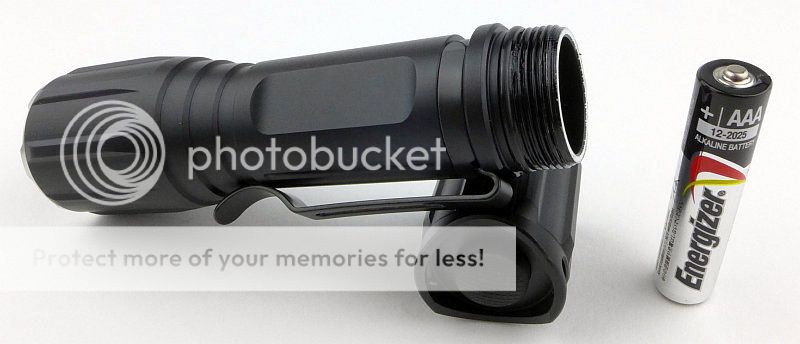
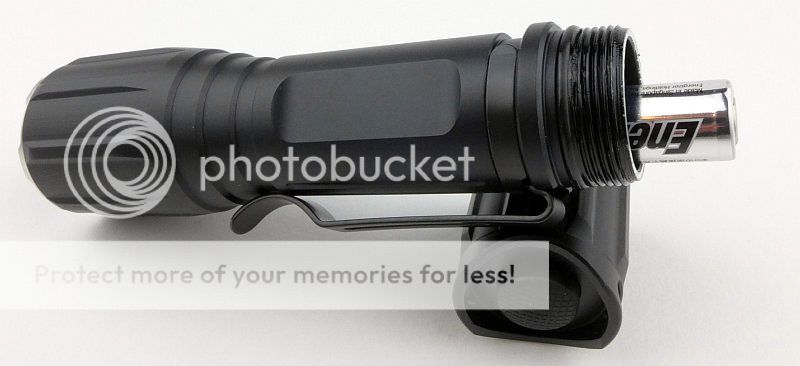
To measure actual output, I built an integrating sphere. See here for more detail. The sensor registers visible light only (so Infra-Red and Ultra-Violet will not be measured).
Please note, all quoted lumen figures are from a DIY integrating sphere, and according to ANSI standards. Although every effort is made to give as accurate a result as possible, they should be taken as an estimate only. The results can be used to compare outputs in this review and others I have published.
| ___________________________________________ | ________________________________ | ________________________________ |
| Nextorch TA10 Mode/Cell | I.S. measured ANSI output Lumens | PWM frequency or Strobe frequency (Hz) |
| ___________________________________________ | ________________________________ | ________________________________ |
| High/14500(orRCR123) | 508 | 0 |
| Medium/14500(orRCR123) | 207 | 710 |
| Low/14500(orRCR123) | 34 | 500 |
| High/CR123 | 296 | 0 |
| Medium/CR123 | 115 | 710 |
| Low/CR123 | 19 | 500 |
| High/AA Alkaline | 146 | 0 |
| Medium/AA Alkaline | 56 | 710 |
| Low/AA Alkaline | 9 | 500 |
| High/AA NiMh | 142 | 0 |
| Medium/AA NiMh | 55 | 710 |
| Low/AA NiMh | 7 | 500 |
Quality AW cells were used for the 14500 and RCR123 measurements.
* Beacon and Strobe output measurements are only estimates as the brief flashes make it difficult to capture the actual output value.
A note on Strobe – Starting 2016 I will not be measuring any Strobe outputs
Peak Beam intensity measured 5800lx @1m giving a beam range of 152m using 14500/RCR123.
There is parasitic drain, and this varies on the cell used.
For AA (NiMh) this is 1.9uA and at this drain it would take 114 years to drain the cell.
For CR123 this is 7uA and at this drain it would take 22 years to drain the cell.
For 14500/RCR123 this is 9uA and at this drain it would take 11/8 years to drain the cell (the difference in time is due to the 14500 being 900mAh and the RCR123 being 650mAh).
As shown in the table above, the maximum output depends on the cell type being used. The following runtime graph shows some (not all) of the possible cells and their output profile on High.
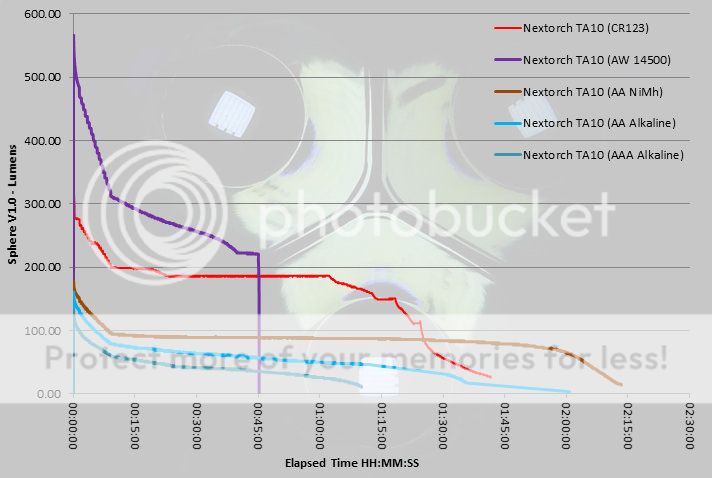
Troubleshooting
This section is included to mention any minor niggles I come across during testing, in case the information helps anyone else.
Not really an issue, but more of a comment. It could be very difficult to get AA, 14500 and AAAs to go into the battery tube properly.
This was due to the positive contact plate sitting at a slight angle inside the tube. You can just about tell that the bottom left part of the plate is dipping down towards the head.

It is very simple to get round this. You only need to hold the TA10 parallel to the ground such that the highest part of this plate is closest to the ground, insert the cell (so its positive contact touches the plate at its highest point) and then push on the tail-cap.
Doing this made inserting the longer cells much easier and also seemed to make the use of AAAs more reliable.
As per the description of this section, this information is provided in case anyone else finds a similar 'issue' that might be fixed in the same way.
The TA10 in use
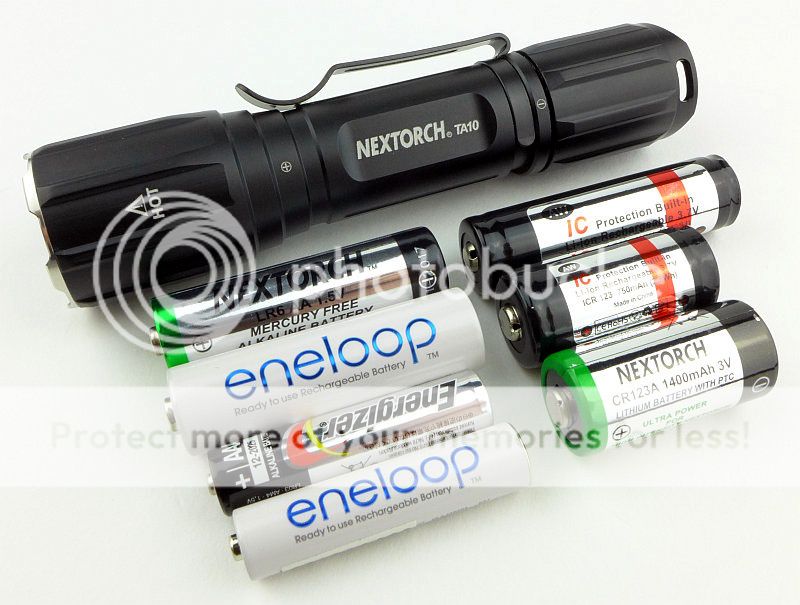
Possibly its biggest feature is that you can throw virtually any cell at the TA10 and you have light. It makes it the ideal travel light as you can start out with cells of your choice and move onto anything you can beg/borrow/steal while away. ('steal' in a metaphorical sense)
Another distinctive feature is Nextorch's DUO SWITCH. This combination of forward and reverse clicky in the same switch is ideal and very intuitive.
Cell choice also determines output. It you want a burst of over 500lm you need to go for li-ion (14500 or RCR123), but if you prefer to not have that initial 500lm burst, you can go for CR123 (296lm) or step down again to AA for a 140lm High mode.
The TA10 has possibly the tightest pocket clip I've ever come across. You might see the in photo that it is already curved when sitting again the light. Like this it is pre-stressed and takes quite a bit of effort to get it moving. Getting it clipped on is tricky, especially if the fabric is light weight, but at least it won't be going anywhere by mistake.
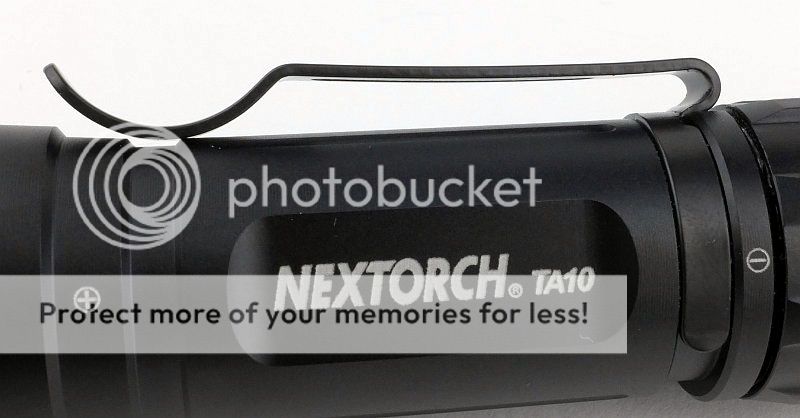
For my own personal taste, the beam is a bit too narrow. For this type of light I'll be using it at close ranges 99% of the time so want a wider beam. Used indoors, that 500lm output is a bit much to start on, but drop in an AA and you are only getting 140lm – much more manageable, with far more useful lower outputs.
I'm hyper sensitive to PWM, and the TA10's lowest PWM frequency of 500Hz gives me the occasional PWM 'moment', but is better than a lot of lights with PWM.
Due to its ability to use so many different cells, the overall size is larger than the average AA light, but this does make it comfortable to hold.
Nextorch don't use knurling or much surface texture, so there is limited grip. This is not a problem, but simply a characteristic, and the feel of the smooth body is very good and it seems very solid. It is good to have something different.
It is a pity Nextorch didn't include a holster with the TA10. For this size of EDC light a small holster would finish it off nicely.
Parasitic drain is very low, but if it did worry you, you can always back the tail-cap off half a turn to lock out the TA10 completely.
If cell compatibility is a key factor for you, the TA10 has got to be on the shortlist, and even if this factor is not high on your priorities, the TA10 is still massively useful to have as a backup due to its ability to run on almost any cell you can find.
Review Summary
| _______________________________________________ | _______________________________________________ |
| Things I like | What doesn't work so well for me |
| _______________________________________________ | _______________________________________________ |
| Will run on AAA, AA, CR123, 14500 and RCR123 | Very tight pocket clip |
| DUO SWITCH (combined Forward/Reverse clicky) | No Holster |
| XP-L LED | Larger than other AA size lights |
| Over 500lm on 14500/RCR123 | Occasionally noticeable PWM |
| Can Tailstand | |
| Solid build | |
| Excellent machining |
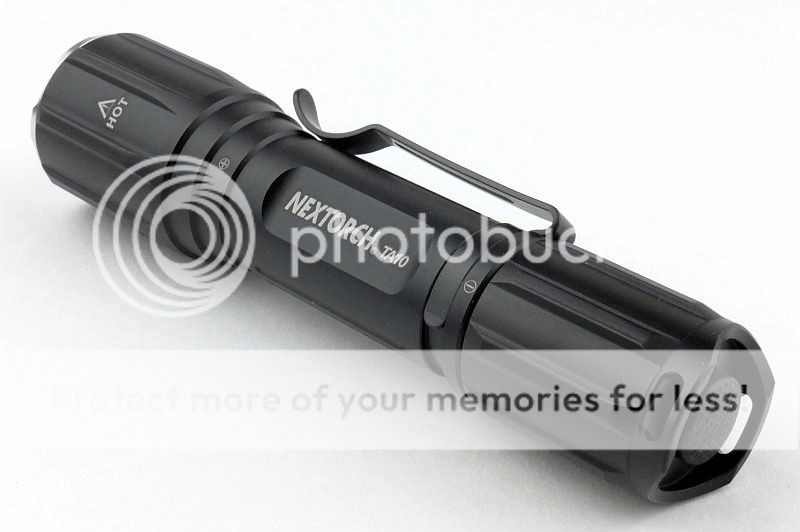
If you enjoyed my reviews, please remember to 'Like' me on Facebook and follow me on Twitter @Subwoofer_CPF
to get all the latest updates and news.
You can also find exclusive insights on Instagram and Pinterest





to get all the latest updates and news.
You can also find exclusive insights on Instagram and Pinterest


